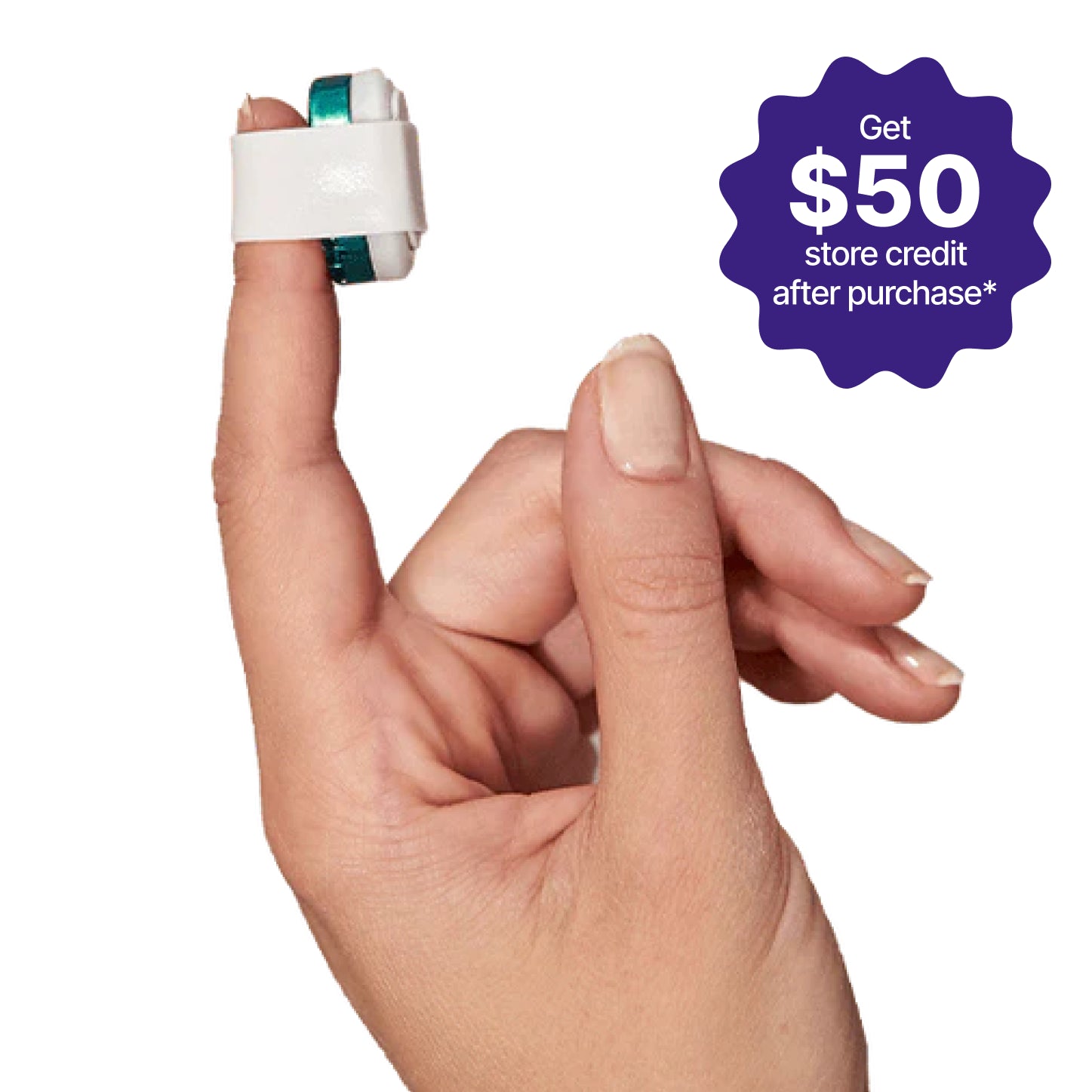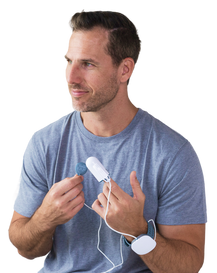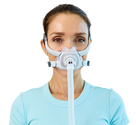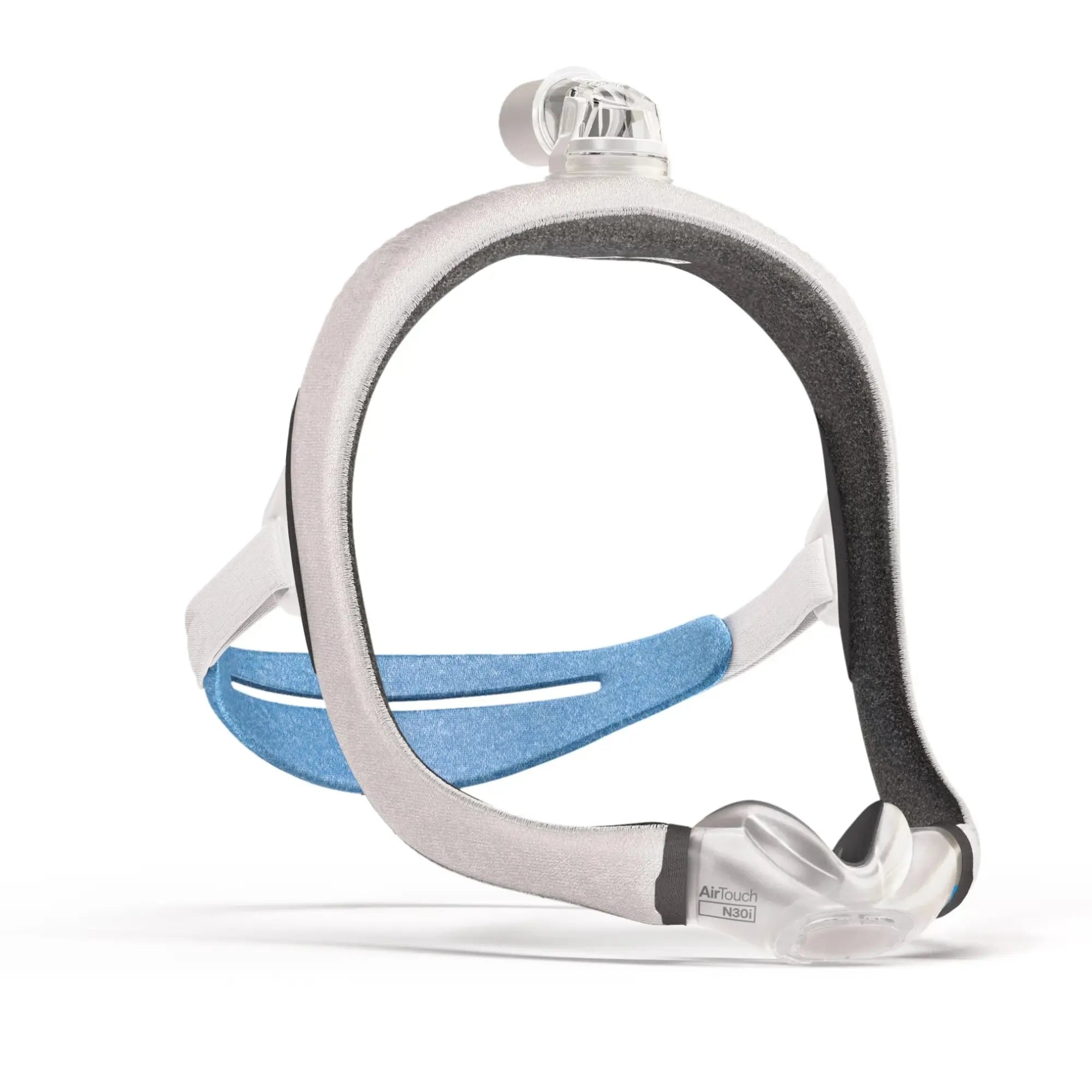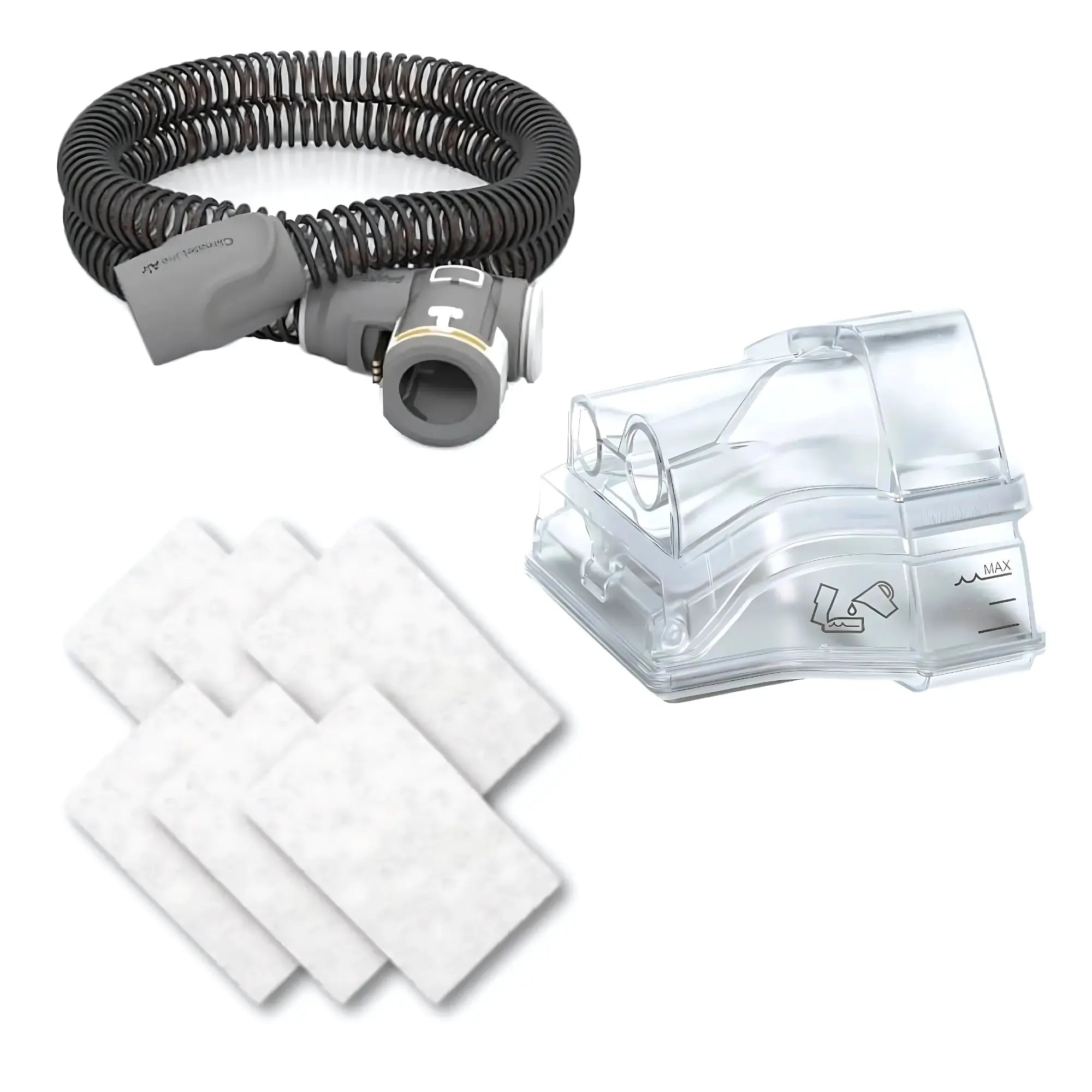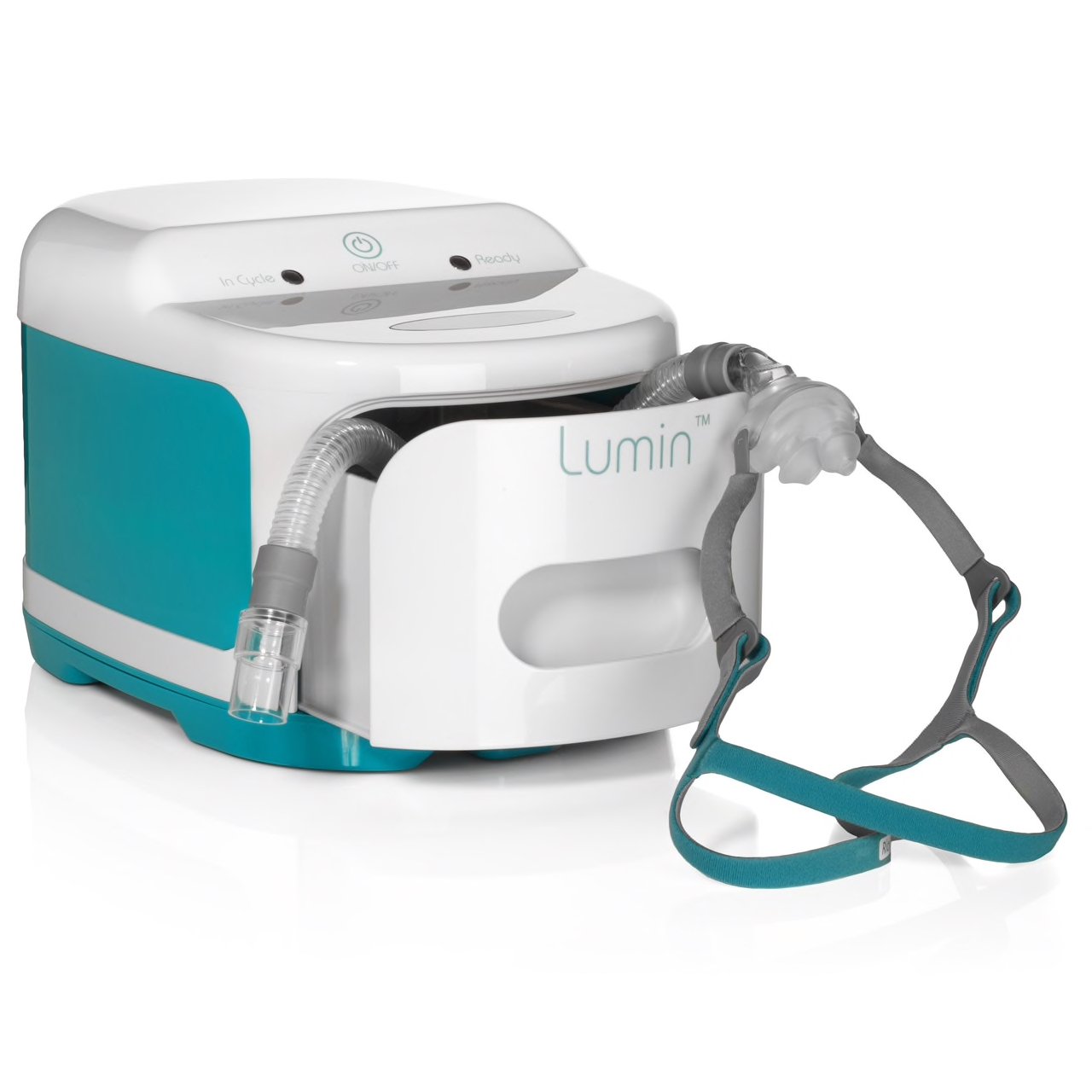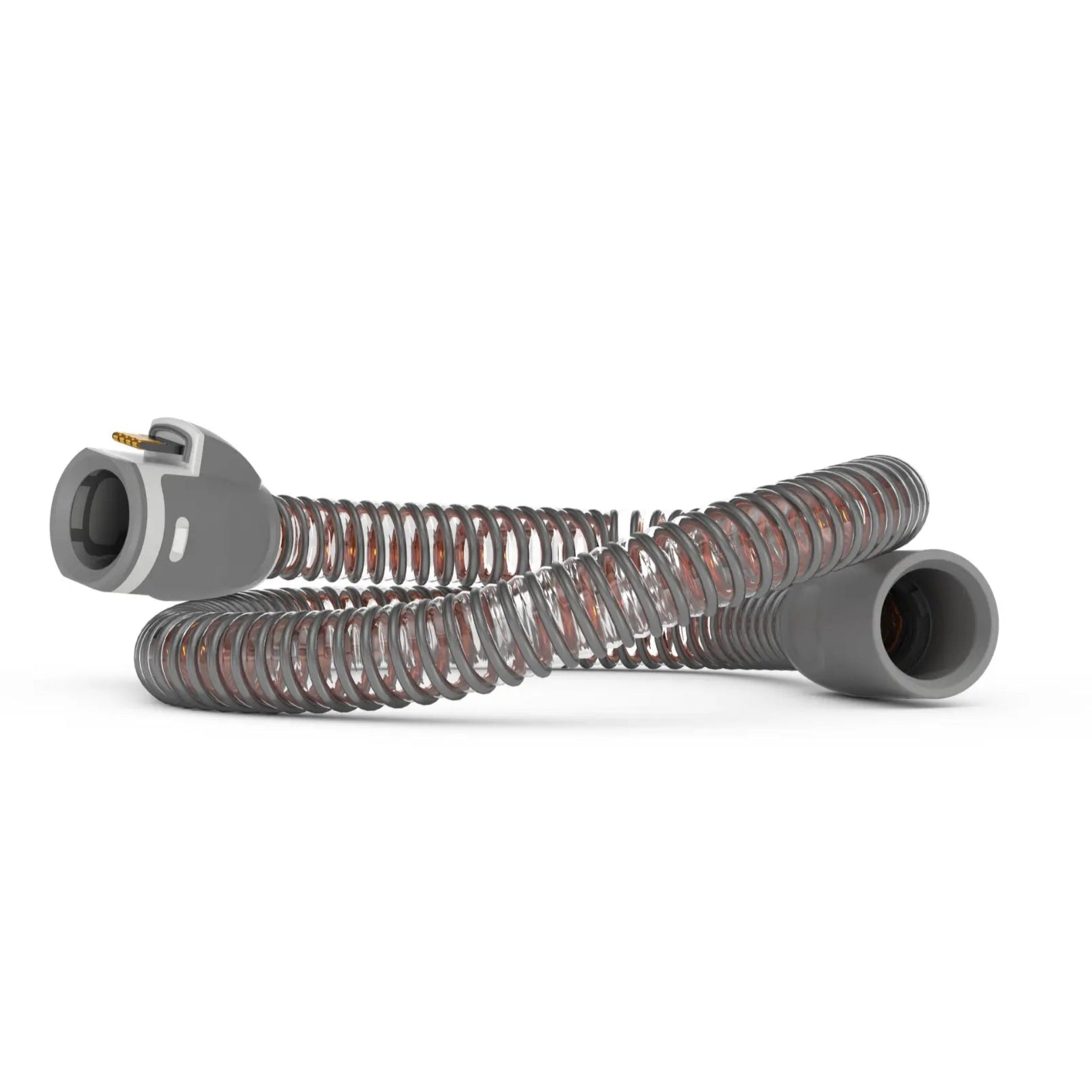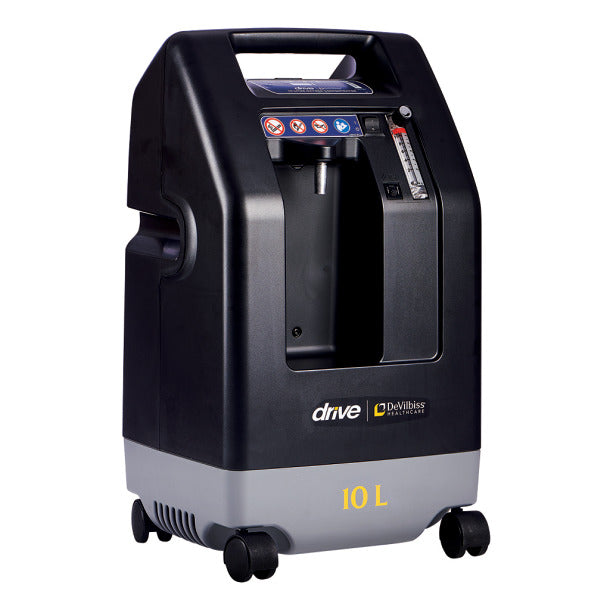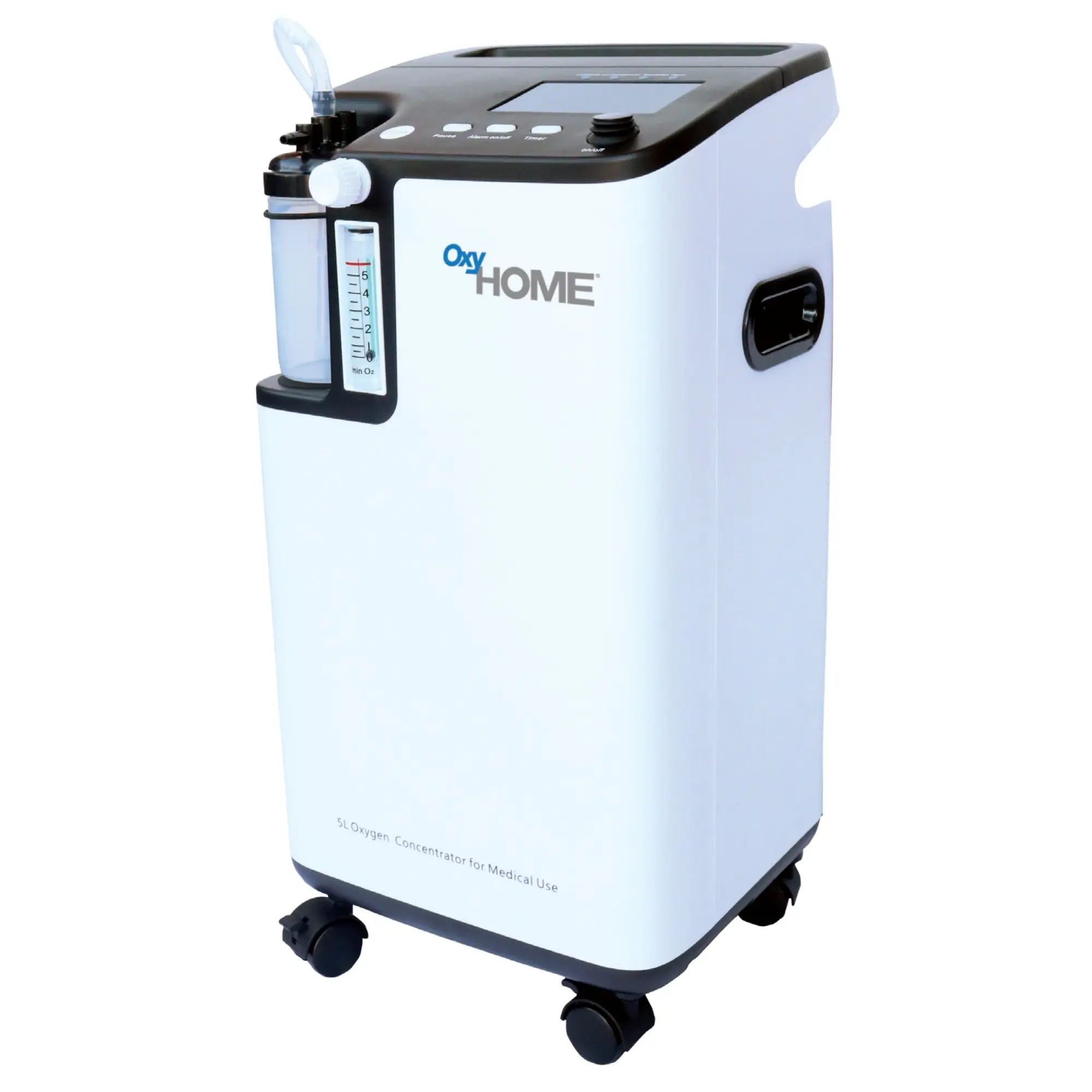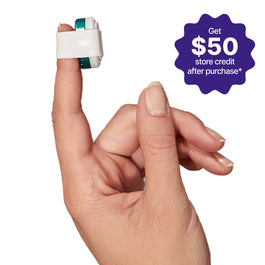Have you been feeling excessive daytime sleepiness, dry mouth, or morning headaches? It might be caused by sleep apnea.
Sleep apnea is one of the most common sleep disorders worldwide and can be attributed to different things, especially big tonsils, obesity, type 2 diabetes, and the use of sedative medication.
Since this disease doesn’t show many symptoms while you’re awake, it’s very important to get a sleep test to be completely sure of the diagnosis.
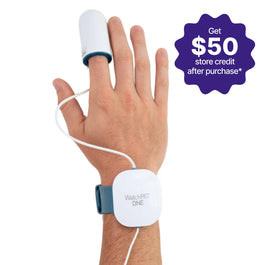
WatchPAT One Home Sleep Test
What Is a Home Sleep Study?
A sleep study, formally known as a polysomnography (PSG), is a diagnostic tool that records your sleep patterns (brain waves), the oxygen level in your blood, eye and leg movements, and your heart rate and breathing patterns during sleep. It can not only diagnose sleep apnea, but is also useful to identify narcolepsy, insomnia, movement disorders, nocturnal panic attacks, sleep paralysis, and many other issues.
It is a multiple-component test that is usually performed in a fully functional sleep lab. During your PSG, some specific physical activities, like your sleep time and how many times you snore, are electronically received and recorded by a specialist. Sometimes the entire process can be uncomfortable and time-consuming since you’ll have to spend a few nights in the lab.
Sleep disorders are quite common in the general population, affecting from 20 to 41.7% of people. The prevalence of sleep disorders in the United States follows a similar pattern, with 50–70 million U.S. adults suffering from lack of sleep.
Most people don’t realize the importance of sleep quality, which plays an essential role in good health, and it affects every process in the body: our physical and mental functioning the next day, our ability to fight some diseases and develop long-term immunity, and our risk of developing chronic illnesses.
That is why it is so important to notice if something uncommon is happening while you sleep. For example, your partner may notice that you stop breathing during the night or that you snore loudly. Those findings could suggest that something during your sleep period is not working properly and should be evaluated by a primary care physician in a sleep clinic or by getting a home sleep test.
Let's get into sleep apnea: It is a sleep-disordered breathing disease characterized by repetitive episodes of absent or reduced inspiratory airflow (apnea and hypopnea) at night. It can become a serious health problem since it can decrease blood oxygen levels in important organs, such as the brain and heart, leading to different complications in the long term, like heart failure, hypertension, and asthma exacerbations.
According to the National Sleep Foundation, an estimated 18 million adults and 10–20% of children who snore in the United States have obstructive sleep apnea (OSA), but most of them are not aware.
The symptoms that can let you know you have sleep apnea are not always present, but include:
- Sleepiness during the day
- Increased breathing effort during the night
- Snoring
- Headaches
- Elevated heart rate
- Repeated episodes of disordered breathing patterns during the night
- Awakening with a dry mouth
Waking up with an urge to urinate during night hours.
There are three main types of sleep apnea:
Obstructive sleep apnea (OSA): The most common type of sleep apnea, OSA occurs when the throat muscles relax, leading to airway closure. It is associated with obesity, big tonsils, and nasal congestion.
Central sleep apnea: This less common type of sleep apnea occurs when the brain fails to send signals to your breathing muscles, causing them to malfunction, and is associated with people who have suffered strokes or are taking sedatives (eg, opioids).
Complex sleep apnea: This rare form of sleep apnea occurs when the person suffers from both the central and obstructive types, leading to more acute symptoms and faster progression.
Why Should You Get a Home Sleep Apnea Test?
WatchPAT OneSleep tests are necessary when you suffer from the previously mentioned symptoms repeatedly, or if you are experiencing other atypical problems while you sleep. But it’s important to clarify that you need to be evaluated by a sleep specialist first, so they can decide if a test is required.
As we mentioned before, these tests are usually performed in sleep labs or sleep centers where you have all the facilities to stay the night while your results are being recorded. However, for a lot of people, performing an overnight sleep study outside of their own bed can be quite uncomfortable.
There are many sleep medicine testing devices that have been adapted so you can be tested from your home. It is considered a modern approach, especially for those who have a daytime job, and it is harder to take time off to go to a sleep lab.
These home tests do not record all the parameters that sleep labs can register, so you need to get a physician’s opinion on which test is the appropriate one for you. At-home sleep studies can be performed for adults who are not comfortable going to the lab and would rather take a sleep test in the comfort of their home. These tests are also known as portable monitoring.
WatchPAT One is the simplest way to get a home sleep apnea test done. When this test is completed, the sleep specialist will calculate the number of times your breathing was impaired while you were resting, and they’ll show it with your apnea-hypopnea index or AHI. This will allow the expert to determine if a diagnosis of OSA or CSA is applicable.

The Best At-home Sleep Apnea Test: WatchPAT One
Sleeplay’s WatchPAT One is the smallest, quickest, and most convenient device to trace your sleep patterns and determine if you have sleep apnea. Please link to our video for a better understanding start. You will need to download the WatchPAT One companion app, which will save your sleep data.
The app is available in the Apple and Google Play stores, and after downloading, you'll need to enter a specific code that will be provided by the Sleeplay doctor. Once the device and app are properly configured, you only need to press the blue button until the red light starts flashing. Once it’s paired, you can connect the finger strap to your finger.
Preparing for Your At-home Sleep Apnea Test
Even if it is a simple test that does not require any specific preparation, we have some tips that can help you make sure your results are accurate:
- Avoid taking naps during that day, since they could shorten your night sleep hours.
- Avoid all types of energizing drinks or food, just like coffee or chocolate. Even if their impact can be small, it’s better to be sure of getting the right results. Besides, one day without those won't cause you any harm.
- Avoid eating profusely, especially near your bedtime.
- Try to relax and enjoy your night as if it were any other day.
- Make sure the device is on and recording just before going to bed.
- Keep your normal body position. The idea is to sleep exactly as you usually do, don't try to change anything to get a more precise result.

How Does a Home Sleep Study Work?
As we just mentioned, this test records different parameters: eye movement, brain activity, limb movement, breathing patterns, heart rhythm, oxygen saturation, sleep latency, sleep duration, and sleep efficiency.
The equipment used in most in-lab sleep studies includes: electrodes to sense neurological activity, a nasal cannula (provides supplemental oxygen therapy through your nose), a pulse oximeter, a microphone for recording sounds, and electrodes that monitor muscle movements.
Home sleep studies are a bit more basic. They don’t include the brain electrodes, which could limit adequate diagnosis in the case of certain sleep issues, or if the doctor is not convinced of what’s going on.
Step-by-Step to Do an At-Home Sleep Test
If you think you might need a sleep test, usually you’ll have to follow the next steps:
A) 1 on 1 consultation with a doctor
This test is not available over the counter. Your primary care physician or sleep technician must prescribe the test.
You just need to make an appointment with a sleep or pulmonary doctor, so they can tell you if the test is truly necessary based on your symptoms, age, comorbidities, and other important aspects.
If you don’t have time to attend an in-person medical consultation at Sleeplay, you can schedule a virtual doctor's appointment to get a prescription. Remember to tell your healthcare provider of all medicines (prescription and over-the-counter) and herbal supplements that you’re taking, since they may alter the test results.
B) Get your sleep study equipment
Your sleep specialist will instruct you to contact a sleep lab or clinic to obtain the necessary equipment for your test.
C) Follow the steps
Once you have the equipment, you can carry out the test. Every sleep test kit comes with an instruction book that you can check to know how it should be connected. Generally, the pulse oximeter is used on your index finger, the nasal cannula is placed in your nostrils, and a band goes around your chest.
D) Get a prescription for your CPAP machine
If the test reveals you have been suffering from sleep apnea, your doctor will discuss these results and some treatment options with you.CPAP therapy is the most used and most effective treatment for obstructive sleep apnea, especially for people who are experiencing excessive daytime drowsiness. It prevents respiratory collapse events by maintaining a positive airway pressure, so no obstructions will occur while you sleep, resolving the problem during the entire night.
CPAP machines are very popular as a method for treating sleep apnea and ensuring a restful sleep. These machines use a hose connected to a mask or nose piece to deliver constant and steady pressurized airflow into the nose and mouth via an attached tube and mask.
Advantages of Doing a Sleep Study at Home
Even though in-lab studies are still the gold standard, many people prefer to get a home sleep study, since it’s usually less expensive and it does not require traveling to the sleep lab. A home sleep apnea test also involves fewer attached devices, so it may feel less invasive.
However, since an in-lab sleep study generally gathers more data, it is more likely to pick up on certain symptoms of obstructive sleep apnea or other conditions like narcolepsy, sleep walking, and rapid eye movement behavior disorder.
Home sleep tests can report:
- Pauses in your breathing
- How much effort does it take for you to breathe
- How shallow your breathing is
- Your oxygen levels.
How Accurate Are Home Sleep Apnea Tests?
When done properly, home sleep apnea tests are highly accurate at detecting OSA in people who have a moderate or severe form. The test becomes less accurate for people with certain other health or sleep disorders, which is why many physicians prefer the in-lab test when the diagnosis is not so clear.
How Much Does a Home Sleep Apnea Test Cost?
Normally, a sleep study can cost between $100 and $600, depending on whether you are doing it from your home or if you need to spend a night in the sleep laboratory, which is the most expensive choice (there's more equipment involved, and a sleep technician needs to be present).
Are Home Sleep Apnea Tests Covered by Insurance?
Many health insurance companies cover home sleep apnea tests. However, there are some exceptions: for example, Medicare does not cover at-home sleep apnea tests, but it will cover lab sleep studies. Therefore, you need to ask your insurance company if your coverage includes this type of study and what the ways are to request it, since there may be additional requirements.
Sleep Apnea Self-tests
Some questionnaires can help you make sure you need a sleep test:
Write about your daily routine:
- Feel tired during the day?
- How do you prepare for sleep?
- Is your sleeping experience bad?
- Do you wake up with a dry mouth?
- Does your sleep quality impact your daily functioning?
- Have you received any complaints from your bed partner?
If most of your answers are yes, you should probably see a physician so they can prescribe a test soon.
Take the sleep apnea test from the comfort of your home with Sleeplay. Get your result in less than a week!



